Every business, big or small, aspires to acquire new customers. But rising advertising costs can be a big blow to the morale of small businesses. Even content marketing and SEO are, to some extent, expensive to implement.
How do you generate profits in a scenario like this? By simply turning a one-time buyer into a repeat customer.
Increasing customer lifetime value is challenging, but doable. In this guide, we shall explore what an improved customer lifetime value means for your business, and what role can email marketing play in increasing it.
Table of contents
- What is customer lifetime value?
- Why is CLV an essential metric for your business?
- How to calculate CLV?
- 7 strategic ways to use emails to increase your CLV
- Limitations of customer lifetime value
- Conclusion
What is customer lifetime value?
Customer lifetime value is a business metric that measures the total business generated by a customer through the entire course of the customer relationship.
Customers are vital to the business. However, everything valuable comes at a cost. For sustenance, the value coming in should always be more than the cost incurred to make that happen.
Clearly, we want an average customer to spend more for a long time. So, the customer lifetime value can be as high as possible.
As a rule of thumb, the customer lifetime value should be more than 3X the cost of acquiring the customer. The metric for calculating the customer acquisition cost is called CAC.

If you incur a cost of $100 to add every new customer, then that customer should spend at least $300 through the entire course of her business relationship with you.
Why is CLV an essential metric for your business?
A lot of statistical information points to the importance of customer retention, such as this data by Invesp Consulting:
Acquiring a new customer can cost five times more than retaining an existing customer.
The success rate of selling to a customer you already have is 60-70%, while the success of selling to a new customer is 5-20%.
Increasing customer retention by 5% can increase profits from 25-95%.
However, is that true across all the customer segments for your business? Are you truly gaining more through your efforts focused on retaining old customers? The answers can vary depending on the kind of business. What is your average ticket size? What pattern of repeat business do you get?
Hence, CLV is an important metric to measure. It is this metric that will help you to answer the following:
What customer segments cost more to retain than the revenue they bring in?
Which customers/segments need more investment to generate more revenue?
Should we focus more on getting new customers or on customer retention?
What kind of customer loyalty programs will work?
How to calculate CLV?
A few data points are needed to calculate the CLV for a specific period (usually over a year).
Average purchase value: What is the average ticket size?
Average purchase frequency: How many times in a year did an average customer make purchases?
Customer value: Average amount of revenue brought in by the average customer
Average customer lifespan: The average length of time a customer continues buying from you (in years)
The formula given above can be used to calculate CLV on different planes too, like a customer segment or a channel.
You can also calculate CLV on an individual level. The formula remains the same, except we also consider the costs of acquiring and serving the customer:
CLV = (Customer Value) X (Customer Lifetime) – (Total Costs of Customer Acquisition and Service)
7 strategic ways to use emails to increase your CLV
There are two main factors to increase CLV: an increase in average ticket size and an increase in average customer lifespan.
Recently, email marketing has emerged as the most effective digital marketing tactic for customer retention at 56%. You can create a flow of information the way you want to conduct it using emails.
So, how can we use emails to increase CLV?
1. Leverage welcome emails
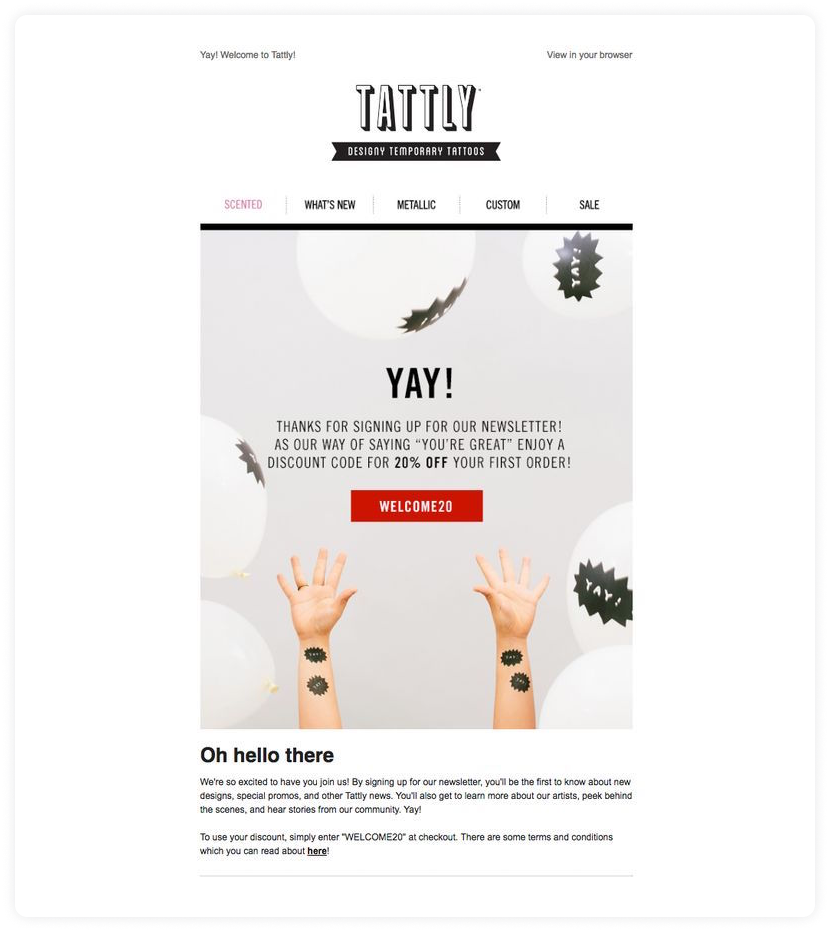
Welcome emails have a whopping 91.43% opening rate. 74% of people expect to receive a welcome email as soon as they subscribe!
Welcome emails on average generate 320% more revenue per email basis, as compared to other promotional emails. Despite this, only 57.7% of brands send welcome emails to their newly subscribed users.
Leveraging welcome emails is easy and can help increase revenue per unique customer right away.
Related guide: Welcome Email Series for E-commerce and D2C Brands
2. Hyper-personalized emails
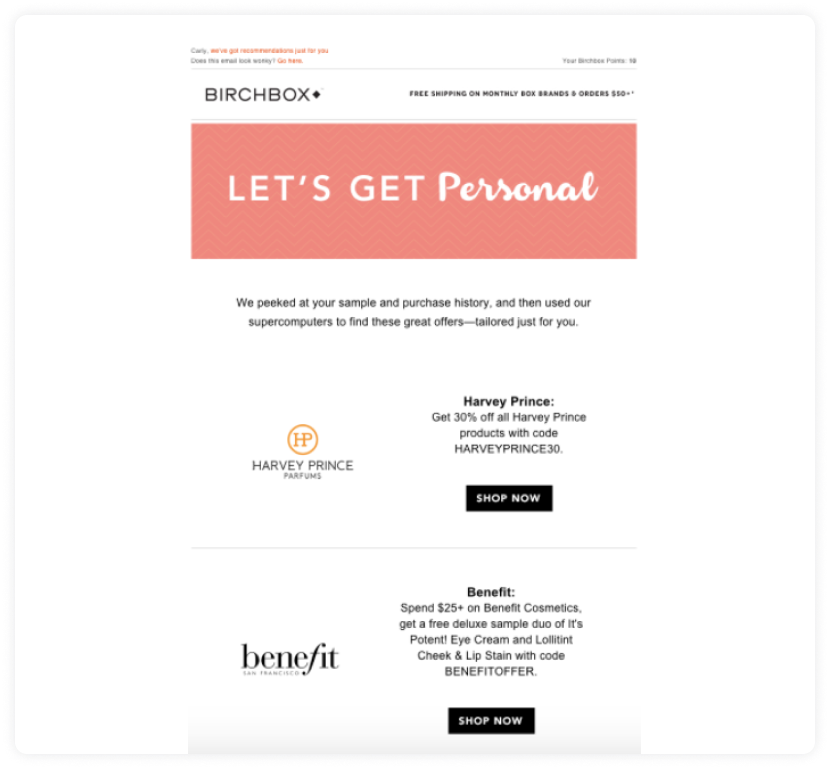
Personalization of emails is not just addressing the sender by name. It needs much more to be effective! Hence the term- hyper-personalized.
Refer to the last contact, visit, or interaction for a better response. You could also share information based on the past purchased items or the total amount saved as part of a scheme. A more meaningfully engaged customer is bound to have a long business relationship.
3. Create a cart abandonment workflow
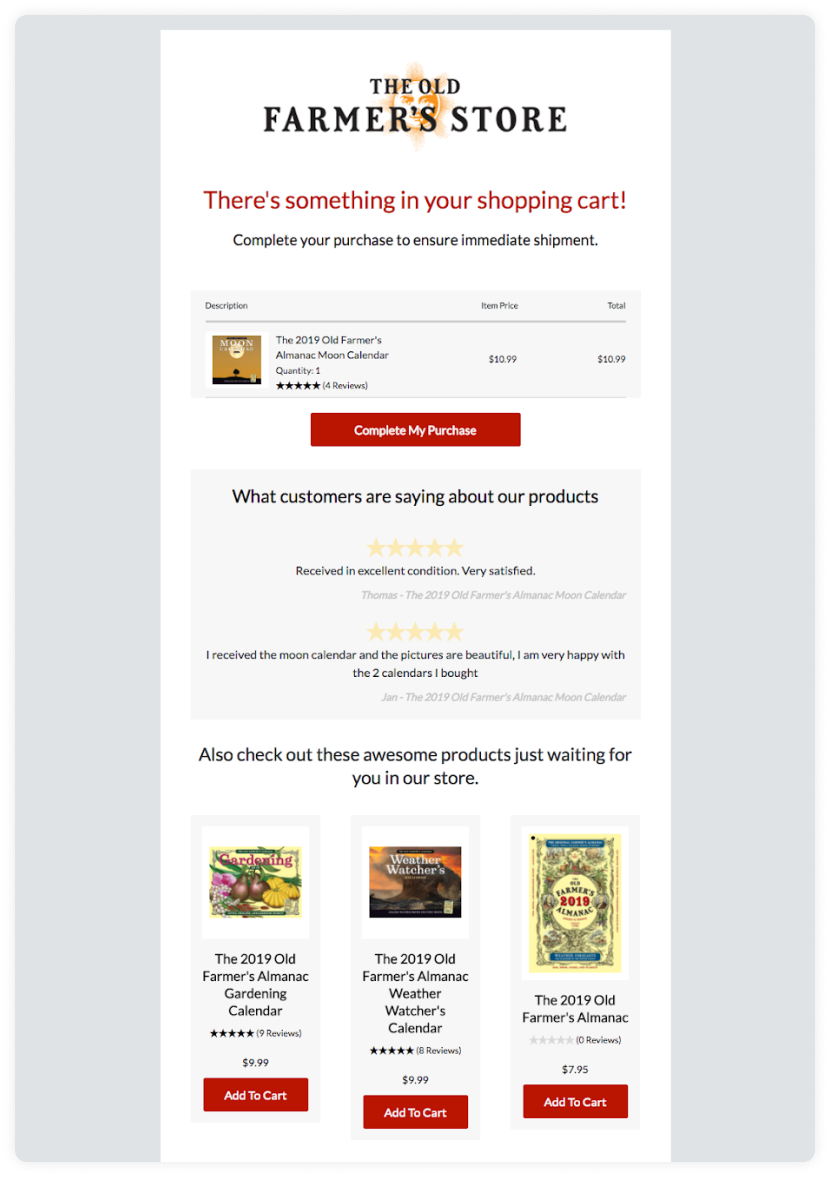
Converting abandoned carts is another low-hanging fruit. A staggering average of 69% of online carts is being abandoned by users. 45% of cart abandonment emails are opened; 21% of all are clicked on, while 50% of the users who clicked purchase.
An abandoned cart is where a customer has already shortlisted a product. Information about the product, the customer is already ready- all it needs is a timely push. Almost a third of clicks on abandoned cart emails (29.9%) lead to a recovered sale. Cart abandonment emails sent within the first hour of abandonment perform best.
This example of a cart abandoned reminder email is perfect. It not only reminds the user about the abandoned item but also shares additional information to help the user make his mind on the same page. Failing that, they create great cross-sell opportunities by sharing other helpful products in the same email.
Related guide: Abandoned Cart Email Series for E-commerce and D2C Brands
4. Re-engagement of inactive customers
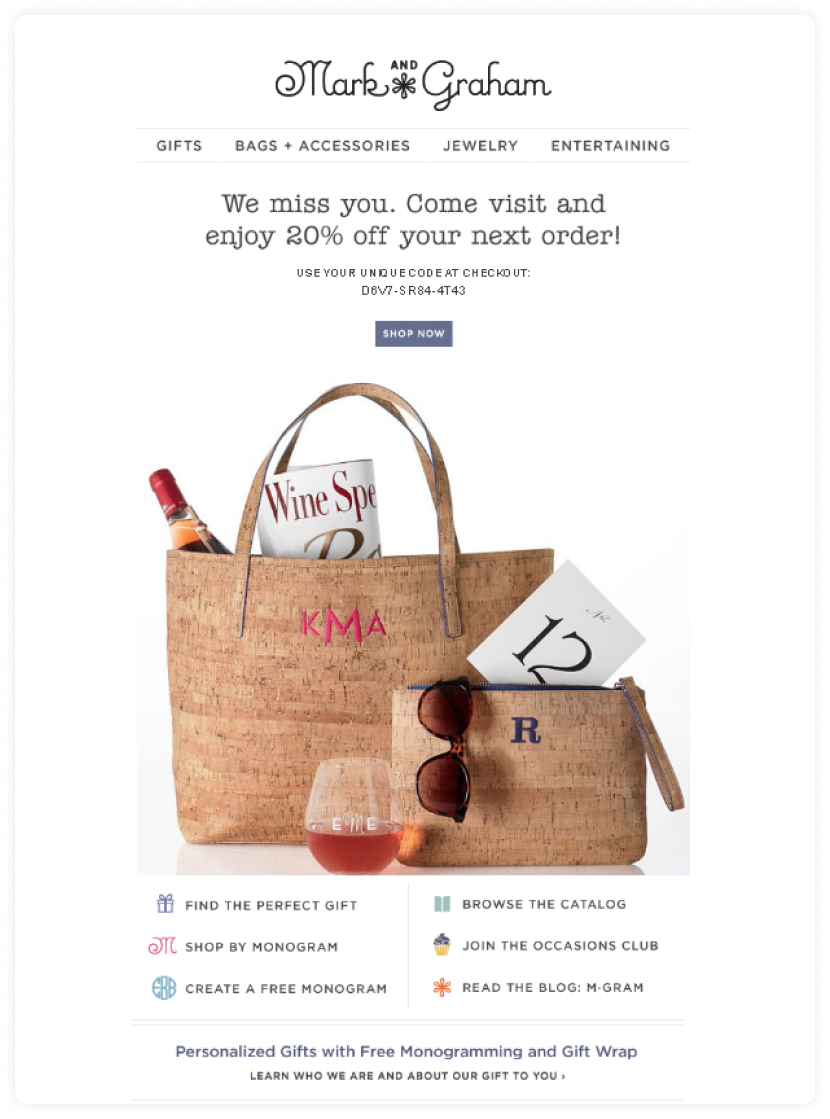
According to a study by Salesforce, 63% of marketers said that re-engagement campaigns are “very effective”. A study by Return Path found that 45% of recipients who received win-back emails read subsequent messages.
Reactivated customers will naturally increase the average lifetime. It is also an excellent opportunity to close the loop with unhappy customers who have chosen to move on. This is where you can get precious feedback to improve upon the customer experience and increase customer lifetime value for other patrons.
Related guide: Re-engagement Email Series for E-commerce and D2C Brands
5. Post-purchase engagement
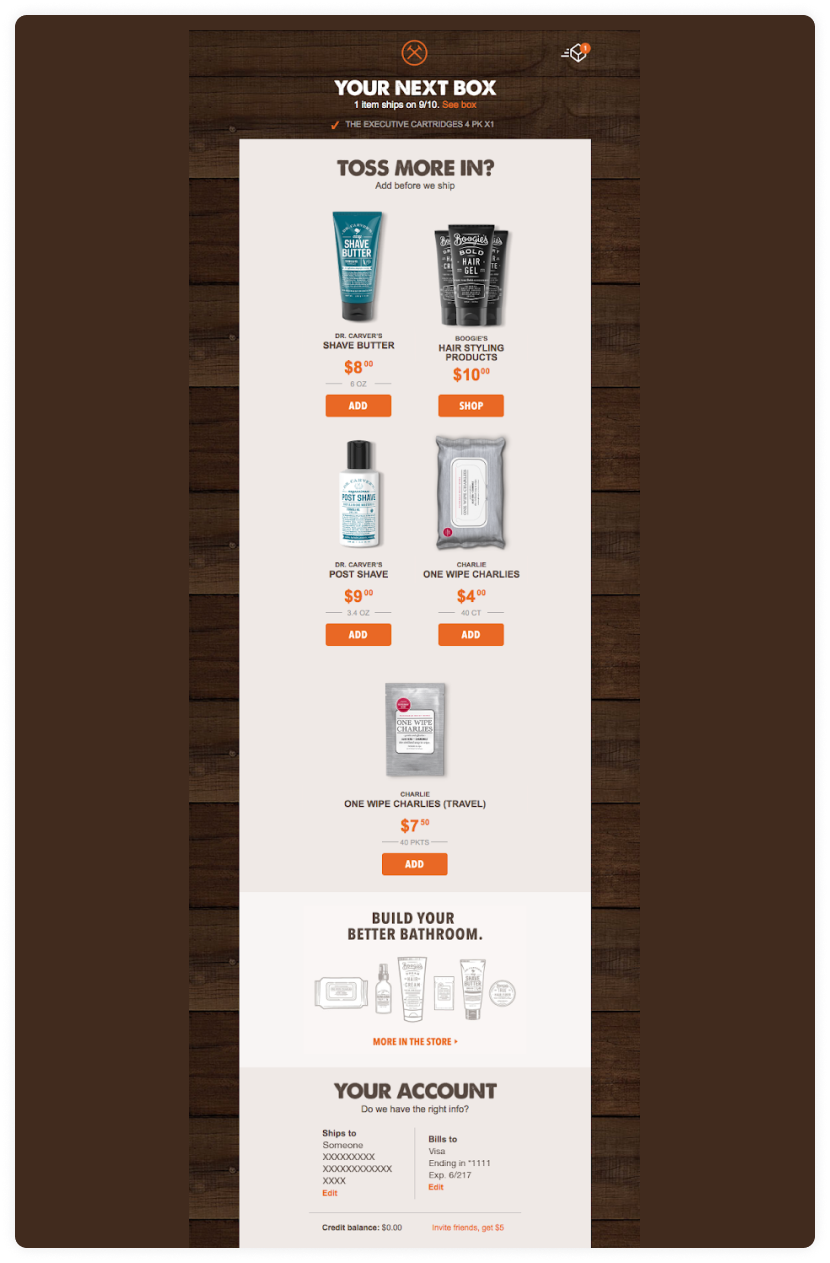
Another successful cross-sell strategy is the “people also buy” tactic. Creating bundles, packed product hampers increase your purchase value for future transactions. Not only does this work as a positive reinforcement of the brand, but leaves the customer with an image in mind for future purchases.
The email snapshot below is an excellent example of a men’s grooming brand. It is engaging with the buyer but also suggesting other products. It is a clever win-win strategy for the business as well as customers.
6. Create great referral programs
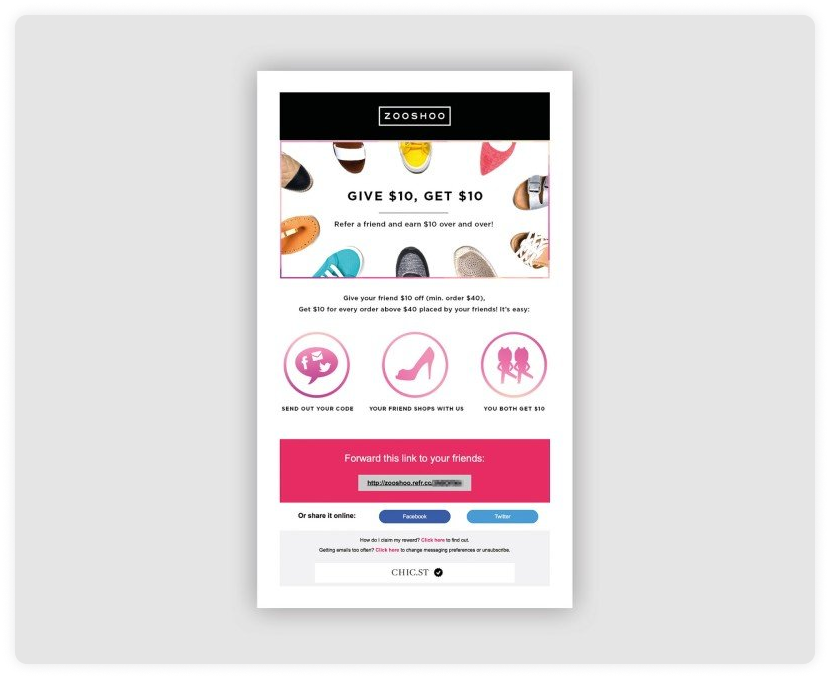
An organic referral cycle is through great product and support experiences. The process is quite long and unpredictable. A referral program aims to engage the customer, generate revenue, and also acquire new customers in a much more calibrated manner. This works to increase the CLV by increasing the revenue and bringing new customers into the fold in that process.
7. Replenishment emails
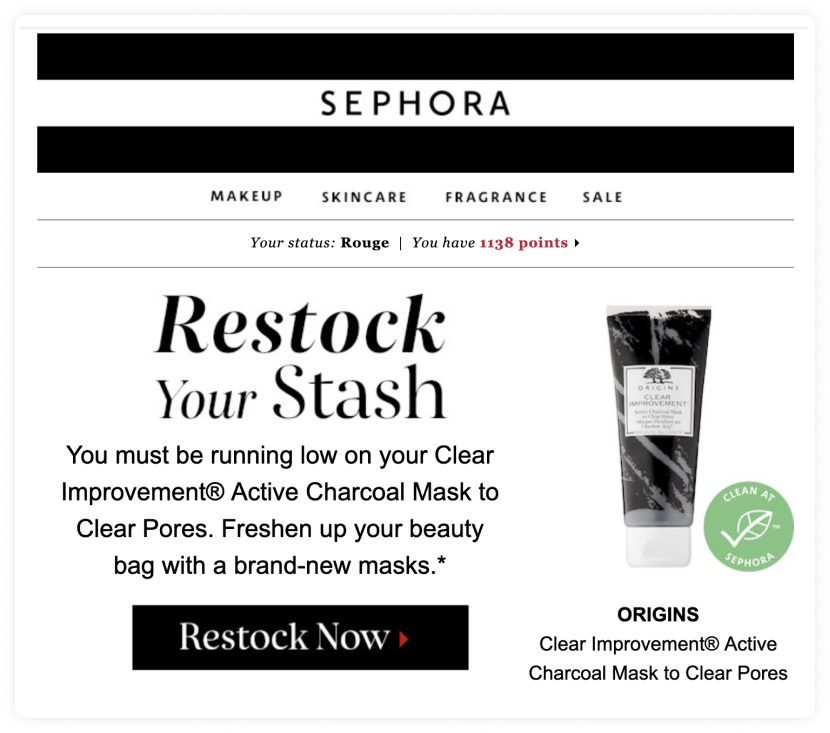
Replenishment emails are another example of easy revenue. These emails prompt customers to repeat purchases of regular-use items like OTC medicines, diapers, shampoo, stationary. These are usually triggered after a logical period when the previously purchased items are estimated to run out.
Limitations of customer lifetime value
Despite what seems like a relatively simple formula, only 42% of companies manage to measure customer lifetime value accurately.
The biggest limitation of CLV is that it does not make any change in customer behavior into consideration. It assumes that if you spend $200 on groceries every month, you shall continue to do so for the entire period of your business relationship at the grocery store. There are so many variables that dictate customer behavior that it is difficult to predict it even with the best data.
A traditional CLV formula can be used to counter some of the disadvantages mentioned above. This formula tries to adjust the changing YOY customer costs and revenues and can result in a more accurate evaluation.
Customer lifetime value is an overall metric. It should not be considered in isolation. CLV, along with other metrics like customer acquisition cost (CAC), Net promoter score (NPS), Customer satisfaction (CSAT) should give a more holistic idea about customer behavior in the organization.
Conclusion
Customer lifetime value is an absolute metric that has its limitations due to a lack of long-term predictability. However, it is a great metric for a high-level understanding of how much revenue each customer or segment will create. The key is to increase ticket size and customer retention while keeping the cost of acquisition minimum. Word of mouth marketing is another great way to acquire customers with less investment. Read our guide to discover how to build a successful word of mouth marketing strategy.
What you should do next
Hey there, thanks for reading till the end. Here are 3 ways we can help you grow your business:
Talk to an email expert. Need someone to take your email marketing to the next level? Mailmodo’s experts are here for you. Schedule a 30-minute email consultation. Don’t worry, it’s on the house. Book a meet here.
Send emails that bring higher conversions. Mailmodo is an ESP that helps you to create and send app-like interactive emails with forms, carts, calendars, games, and other widgets for higher conversions. Sign up now and send 10k free emails/month. Sign up here.
Get smarter with our email resources. Explore all our knowledge base here and learn about email marketing, marketing strategies, best practices, growth hacks, case studies, templates, and more. Access guides here.

